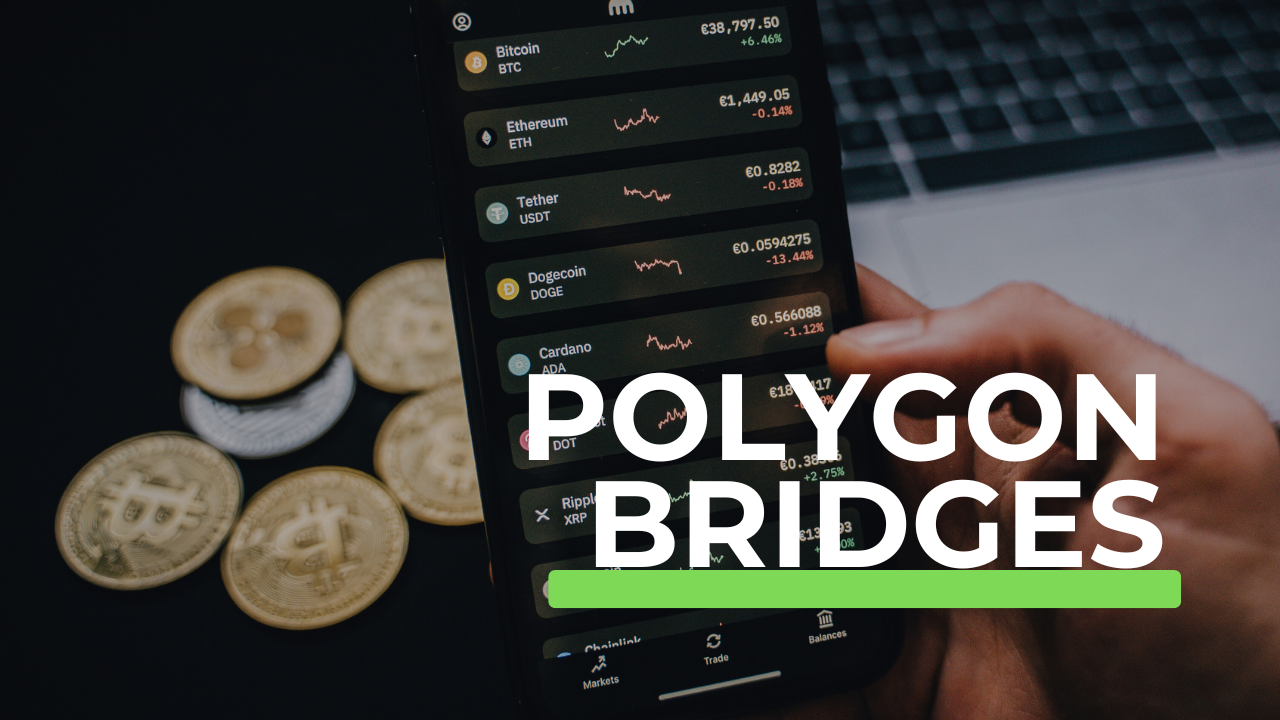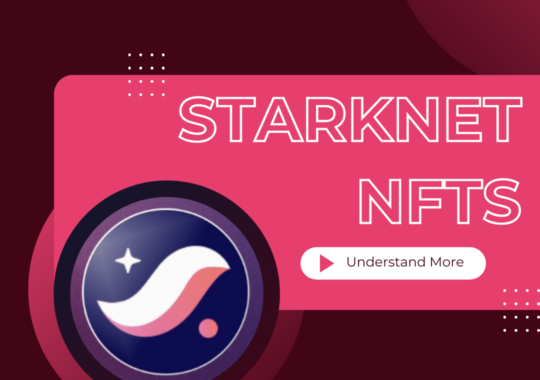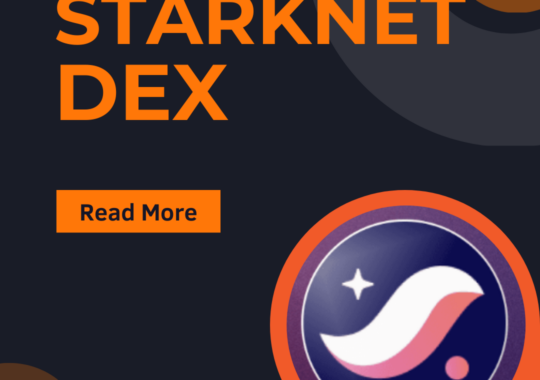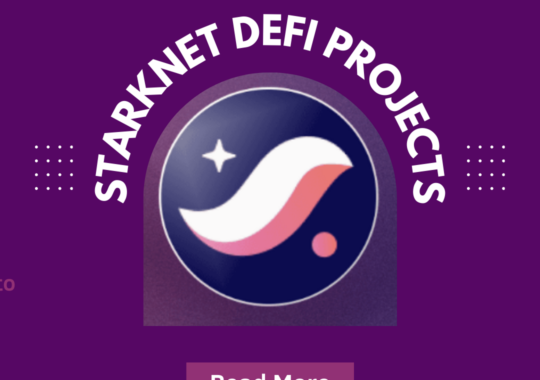Polygon bridges are essential components in facilitating seamless integration across different layers and platforms within the blockchain ecosystem. As platforms like Ethereum experience increasing adoption, scalability becomes a critical concern. Ethereum, as a Layer-1 solution, prioritizes decentralization and security. However, to address scalability challenges, Layer-2 solutions—such as those provided by Polygon—process transactions off the Ethereum mainnet. But how do we ensure that transactions and assets on Layer-2 solutions remain synchronized and interoperable with the Ethereum mainnet? Enter Polygon bridges, a solution bridging the gap between Ethereum and Layer-2 networks. In this article, we explore the mechanics and significance of these bridges within Polygon’s architecture.
Top Polygon Bridges for 2024
1. Polygon Native Bridge
It plays a crucial role as a cross-chain connection, facilitating smooth transactions between the Ethereum and Polygon networks. Let’s explore its main features:
- Decentralized Bridging:
- Operating as a fully decentralized bridge, the Polygon Native Bridge ensures trustless asset transfers between Ethereum and Polygon.
- When a token migrates from Ethereum to Polygon, it is securely locked up, while an equivalent amount of tokens is minted on a 1:1 ratio as pegged tokens on the Polygon network.
- Bi-Directional Asset Transfers:
- Users can transfer assets in both directions:
- From Ethereum to Polygon: Tokens are locked on Ethereum, and corresponding pegged tokens are minted on Polygon.
- From Polygon to Ethereum: Pegged tokens are burned on Polygon, unlocking the original tokens on Ethereum.
- Users can transfer assets in both directions:
- Efficiency and Decentralization:
- Employing a trustless, dual-consensus architecture, the Polygon Bridge maximizes efficiency and decentralization.
- It adopts a single-token architecture, facilitating arbitrary state transitions on Ethereum Virtual Machine (EVM)-compatible sidechains.
- Expanded Access to dApps:
- Through the Polygon Bridge, users can tap into decentralized applications (dApps) within the Polygon ecosystem.
2. Rango Exchange: Cross-Chain DEX & Bridge Aggregator
Rango Exchange serves as a robust link between diverse blockchain networks, facilitating smooth asset transfers and exchanges. Let’s delve into its primary features:
- Seamless Asset Transfer Across 60+ Chains: Rango offers a unified platform for transferring assets across a broad spectrum of blockchains, including Ethereum, Cosmos, Solana, and more.
- Intelligent Routing: It intelligently directs transactions across decentralized exchanges (DEXs), DEX aggregators, bridges, and cross-chain protocols, ensuring efficient and secure swaps.
- Message Passing: Rango enables the seamless transfer of messages from one blockchain to another, enhancing interoperability.
- High Liquidity and Efficiency: Comprehensive Aggregation: Rango integrates DEXs, DEX aggregators, and bridges on a global scale. It executes complex, multi-step swaps by optimizing liquidity sources.
- Maximum Swap Liquidity: With support from over 100 DEXs and bridges, Rango ensures competitive pricing and minimal slippage for users. Optimized Fee Structure: Users benefit from cost-effective swaps compared to centralized exchanges (CEXs).
- User-Centric Approach: Non-Custodial Operations: Rango operates in a fully trustless and decentralized manner, eliminating the need for Know Your Customer (KYC) requirements. Unified User Experience for DeFi Protocols: Users can seamlessly access over 100 DeFi protocols through Rango’s intuitive interface.
- Secure and Reliable: Rango integrates decentralized protocols and undergoes rigorous audits to ensure security and trustworthiness.
3. Rhinofi: The Ultimate Layer 2 Gateway to Multi-Chain DeFi
Rhinofi emerges as a potent Layer 2 bridge, streamlining the movement of tokens across multiple chains within the decentralized finance (DeFi) landscape. Let’s delve into its notable features:
- Seamless Cross-Chain Transactions: Effortlessly move assets across different chains with a single click, enhancing accessibility and convenience.
- Swift and Secure Transactions: Rhinofi ensures rapid transaction processing without compromising on robust security measures, prioritizing user safety.
- Self-Custodial Interoperability: Users maintain full control over their assets, fostering a sense of ownership and security.
- Effortless Management Across Chains: Rhinofi facilitates the hassle-free management of assets across diverse blockchain networks, simplifying user experience.
- Cost-Effective Transactions, Premium Experience: Rhinofi aims to democratize DeFi by welcoming the next billion users. Its fee model accommodates all users, ensuring an inclusive and rewarding DeFi journey for everyone involved.
- Multi-Chain Compatibility: Enjoy the flexibility to swap, trade, and invest across 23 major chains seamlessly such as Optimism, Polygon (zkEVM), Kroma, Mantle, Mode, Rari, Tron, Zeta etc.
4. Across Protocol
It is a decentralized platform designed to facilitate seamless and efficient asset bridging between Ethereum and other blockchain networks. Let’s explore its main features:
- Across Bridge: A bridge connecting diverse blockchains, ensuring secure and rapid asset transfers. Achieves interoperability by smoothly transferring tokens across different chains. Provides the fastest and most cost-effective bridging solution while prioritizing security.
- Across DEX (Decentralized Exchange): A decentralized exchange enabling cross-chain asset trading. Allows users to directly swap tokens between various chains within the protocol. Enhances liquidity and accessibility for users operating across different networks.
- Across Staking: A staking platform allowing users to earn passive income through ACX token staking. Participants contribute to network security and governance while receiving rewards.
- Across Governance: Empowers ACX token holders to engage in protocol decision-making. Decentralized governance ensures community participation and consensus.
5. Orbiter Finance
It is a decentralized asset management protocol operating on the Ethereum blockchain, poised to transform asset management within the decentralized finance (DeFi) arena. Let’s delve into its primary features:
- Automated Yield Optimization: Orbiter Finance intelligently distributes user funds across various DeFi protocols to maximize yields. Utilizing real-time market data and yield opportunities, the platform dynamically adjusts asset allocation for optimal returns. Users enjoy automated yield optimization without the need for manual intervention.
- Risk Management Strategies: The platform diversifies assets across multiple protocols, mitigating risks associated with any single point of failure. Incorporates stop-loss mechanisms and dynamic risk controls to minimize potential downside risks and safeguard capital. Ensures robust risk management practices to protect user funds.
- Governance and Community Engagement: Operating on a decentralized governance model, where token holders propose and vote on protocol enhancements. Transparency, decentralization, and alignment with user interests are the guiding principles shaping the platform’s evolution. Community-driven decision-making fosters active involvement and participation
6. Layerswap: Bridging Crypto Networks
It introduces an innovative solution facilitating seamless transfers of crypto assets across diverse networks. Here are its standout features:
- Rapid and Reliable Transfers: Layerswap ensures swift movement of crypto assets, enabling users to transfer holdings within minutes. Whether exploring new apps, engaging in projects, purchasing NFTs, or managing assets across Layer 2 networks, DEXes, or wallets, Layerswap offers seamless solutions.
- CEX to Blockchain Direct Transfers: Unlike traditional bridges, Layerswap enables direct and instantaneous transfers from centralized exchanges (CEXes) to blockchains. This streamlined feature simplifies user processes, eliminating unnecessary steps.
- Minimal Fees: Prioritizing affordability, Layerswap allows users to transfer crypto assets with minimal fees, appealing to budget-conscious individuals.
- Cross-Chain Support: Layerswap connects over 15 exchanges and 30 blockchains, facilitating frictionless transfers between them. Whether moving assets between Ethereum, Binance Smart Chain, Polygon, or other networks, Layerswap provides comprehensive coverage.
- Web3 Project Onboarding: Web3 projects can utilize Layerswap to seamlessly onboard users. By facilitating easy deposits from CEXes, blockchains, and fiat, Layerswap empowers projects to expand their user base effortlessly.
- User Experience (UX) Focus: Layerswap prioritizes simplicity in crypto deposits. Its user-friendly interface ensures that even newcomers to crypto can execute instant and affordable transfers with ease.
7. Synapse Protocol
It is a bridge facilitating connectivity across diverse crypto networks. Synapse serves as a universal cross-chain protocol, seamlessly connecting both EVM (Ethereum Virtual Machine) and non-EVM chains. Through generalized message passing, it supports cross-chain asset movements, smart contract calls, and NFT transfers. Here are its standout features:
- Native Cross-Chain Applications: Developers can construct native cross-chain applications using Synapse. Whether crafting AMMs (Automated Market Makers), lending platforms, derivative markets, yield aggregators, or other DeFi solutions, Synapse offers the framework.
- Optimistic Security Model: Synapse employs an optimistic security model to validate cross-chain transactions, ensuring the integrity and trustlessness of messages exchanged between chains.
- Wide Blockchain Support: Supporting over 16 different EVM and non-EVM blockchains, including Ethereum, Avalanche, Binance Smart Chain, Polygon, and more, Synapse offers extensive blockchain compatibility. Developers can seamlessly integrate cross-chain token bridging into their decentralized applications.
- Battle-Tested Infrastructure: With millions of transactions processed and tens of billions in bridged assets, Synapse has established its reliability. Its battle-tested infrastructure instills confidence among users and developers alike.
- Use Cases: Cross-Chain Exchange: Utilize Synapse’s token swaps to exchange assets across any blockchain seamlessly. Universal Money Markets: Borrow and lend assets effortlessly across different chains. Multi-Chain Gaming: Forge unique gaming experiences spanning multiple blockchains.
Conclusion
In summary, blockchain bridges like those provided by Polygon, along with platforms such as Rango Exchange, Rhinofi, Across Protocol, Orbiter Finance, Layerswap, and Synapse Protocol, are crucial for seamless integration and scalability in the blockchain ecosystem. These solutions facilitate efficient asset transfers, cross-chain communication, yield optimization, risk management, and community engagement. By bridging gaps between different networks and prioritizing user needs, they contribute to the growth and innovation of decentralized finance (DeFi) and blockchain technology overall
Princy Agarwal, a postgraduate in English from Delhi University, writes content for Tricky Finance, where they simplify complex financial topics for readers. With a knack for clear communication, Princy’s work helps make finance understandable and accessible to all.




